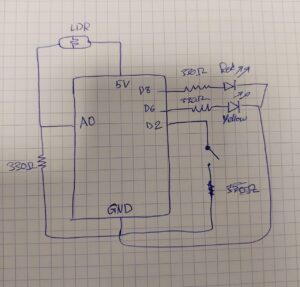For user testing, I told my test user to start the game without giving any instructions. The user immediately figured out that the controller was not an ordinary one because it’s just a piece of plastic with nothing on the outside. Luckily the first thing he tried was to tilt the controller, which made the character move, allowing him to complete the first level of the game.
One aspect of the experience that worked surprisingly well was that all my test users somehow knew that that the goal was to move upwards even though I didn’t indicate that the finish line was there. It then became clear that because the bottom boundary of the maze is showing, the users assumed that the finish line was in the other direction.
The biggest area that can and will be improved is the robustness of the controller. It’s currently an accelerometer and vibration motor taped to the controller case, which makes it weak and sometimes makes it fall apart. I plan to use the glue gun to fix this. Another issue is the amount of wires going out of the controller. There are currently 5 wires for the accelerometer and 3 for the vibration motor. While these are essential to make the game work, I can make them less annoying by using tie cables to clamp them all into one single wire.
I didn’t need to explain anything to my test users, however, the game might not be as intuitive for other users. I plan on adding an instruction page in the beginning and some text under the controllers on the box that tells users they’re supposed to tilt them to move.


